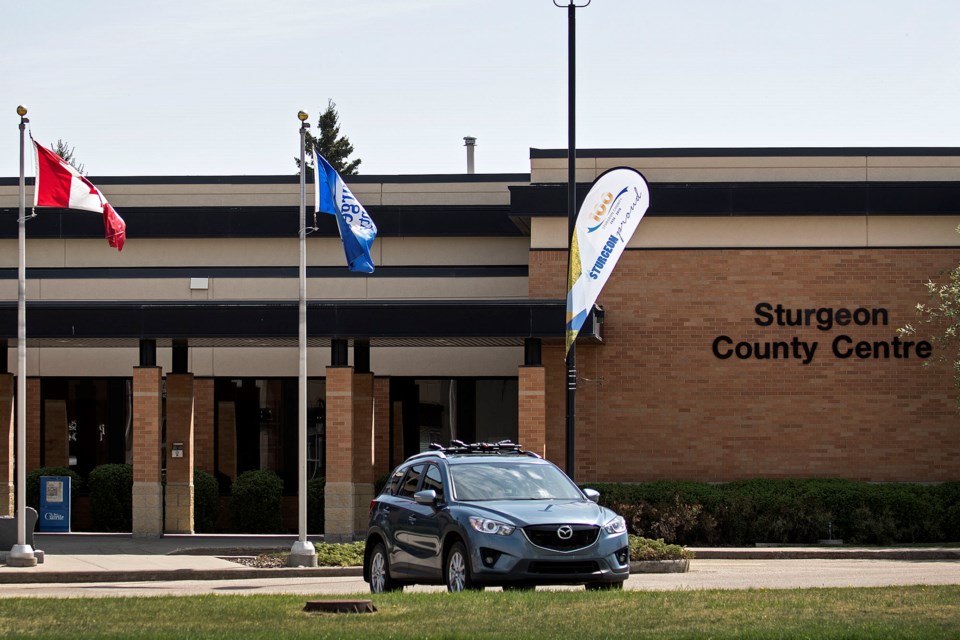Refinery cash shuffle
County council has used a gift from the Sturgeon Refinery to pay for $6 million in fast-tracked road projects.
Sturgeon County council voted Tuesday to cancel plans to borrow $6 million to pay for six road improvement projects. Instead, they moved to pay for those projects with the $6 million they received from North West Redwater Partnership (NWR, the company behind the Sturgeon Refinery) last August.
The county’s 2019 capital budget included 11 road projects that were supposed to be funded using tax cash from the Sturgeon Refinery. Much of that cash has yet to materialize, as the refinery isn’t fully operational.
Back in May, council moved to finance seven of those projects with plans to pay back the money using future funds from the refinery, voting 5-2 to rebuild 1.6 km of Range Road 230 from north of Hwy. 37 using grants and reserves (councillors Susan Evans and Karen Shaw opposed) and 4-3 to borrow $6 million to fund the rest (Evans, Shaw, and Neal Comeau opposed).
In August, NWR officials gave the county a $6-million “community enhancement contribution” to make up for delays at the refinery.
Council heard administration had started work on the six road projects (which involve Range Road 274 just east of Calahoo, Range Road 242 between Township Road 554 and Shultz Drive, subdivision roads in Riverside Park and Cameron Park, and the 300 m of Township Road 562 east of Hwy. 2 north of Morinville) but had yet to actually borrow the $6 million. Administration recommended cancelling the loan and using the $6 million from NWR instead.
A report to council suggests this move eliminates some $450,000 in interest the county would have paid on a $6-million loan.
Air monitoring
Sturgeon County residents may soon have a better picture of the state of their air now that county council has joined an airshed alliance.
Council voted to join the Alberta Capital Airshed Tuesday. The not-for-profit group runs air quality monitoring stations in the greater Edmonton region, including the one by Vital Grandin Catholic School in St. Albert.
Sturgeon’s airspace is split between the Fort Air Partnership and the ACA, with the Fort covering everything east of Namao and the ACA doing the rest.
County utility and waste management services manager Jeff Yanew told council there was a shortage of air monitoring data in the west half of the county, as most monitoring stations were either in or east of Edmonton. The ACA had one passive air quality station at the Villeneuve truck-fill station, and membership would qualify the county for a second monitoring station. The county would also get valuable data about forest fire smoke and expertise and equipment with which to address air quality concerns raised by residents.
“We know we’re missing places in Sturgeon County,” said ACA executive director Gary Redmond, and the group was reviewing its monitoring network to figure out where to place new stations. Morinville and Legal were both good candidates.
The county will pay $3,750 a year for ACA membership. St. Albert and Edmonton are also part of the ACA.
Road recommendations
Sturgeon County should look into some advance street signs so drivers can have a better idea where they’re going, says the head of the county’s transportation committee.
County council voted Tuesday to carry out nine recommendations from the county’s transportation advisory committee as presented by chair Don Levers.
“Travelling along Hwy. 28 at 100 km/h, the signs on the side of the road are quite small,” Levers said in an interview.
The committee recommended that administration look into advance local road signage on major roads (e.g. “RR 255 ahead”) as other jurisdictions had done to make navigation easier.
The committee also called on the county to work with CN Rail on how to maintain gravel roads at rail crossings. Levers said the county can’t put gravel right up to the rail lines without CN’s permission, which has resulted in deep dips at many crossings and (he joked) damaged tailpipes. The committee suggested putting down cold mix as an alternative.
Other recommendations included a review of weed inspection procedures, improved public engagement, and the expansion of the gravel road shoulder stabilization pilot project (which the committee found made road shoulders safer to drive on) to the entire county.
The advisory committee reports to council twice a year.




